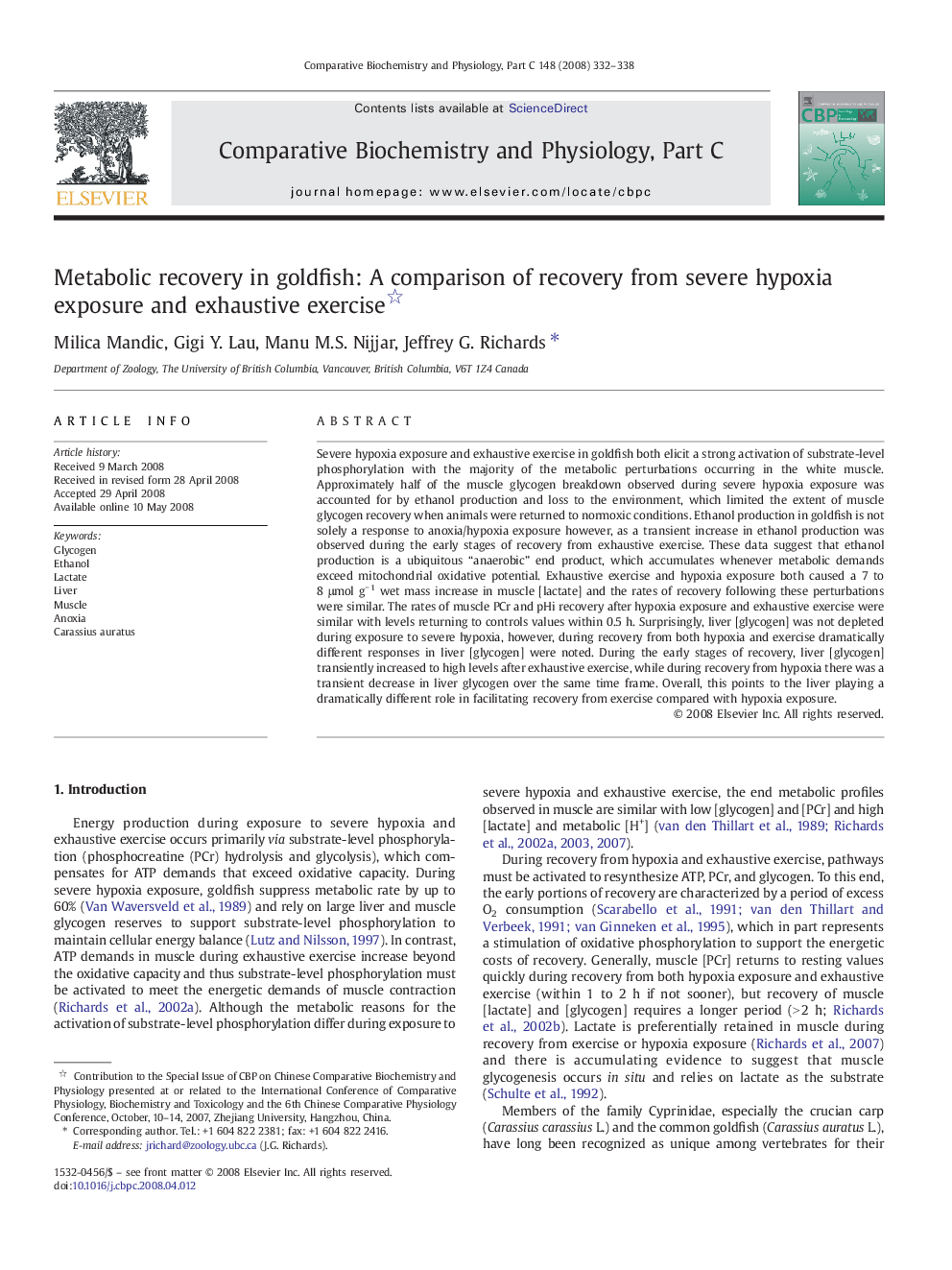| Article ID | Journal | Published Year | Pages | File Type |
|---|---|---|---|---|
| 1977741 | Comparative Biochemistry and Physiology Part C: Toxicology & Pharmacology | 2008 | 7 Pages |
Severe hypoxia exposure and exhaustive exercise in goldfish both elicit a strong activation of substrate-level phosphorylation with the majority of the metabolic perturbations occurring in the white muscle. Approximately half of the muscle glycogen breakdown observed during severe hypoxia exposure was accounted for by ethanol production and loss to the environment, which limited the extent of muscle glycogen recovery when animals were returned to normoxic conditions. Ethanol production in goldfish is not solely a response to anoxia/hypoxia exposure however, as a transient increase in ethanol production was observed during the early stages of recovery from exhaustive exercise. These data suggest that ethanol production is a ubiquitous “anaerobic” end product, which accumulates whenever metabolic demands exceed mitochondrial oxidative potential. Exhaustive exercise and hypoxia exposure both caused a 7 to 8 μmol g− 1 wet mass increase in muscle [lactate] and the rates of recovery following these perturbations were similar. The rates of muscle PCr and pHi recovery after hypoxia exposure and exhaustive exercise were similar with levels returning to controls values within 0.5 h. Surprisingly, liver [glycogen] was not depleted during exposure to severe hypoxia, however, during recovery from both hypoxia and exercise dramatically different responses in liver [glycogen] were noted. During the early stages of recovery, liver [glycogen] transiently increased to high levels after exhaustive exercise, while during recovery from hypoxia there was a transient decrease in liver glycogen over the same time frame. Overall, this points to the liver playing a dramatically different role in facilitating recovery from exercise compared with hypoxia exposure.
